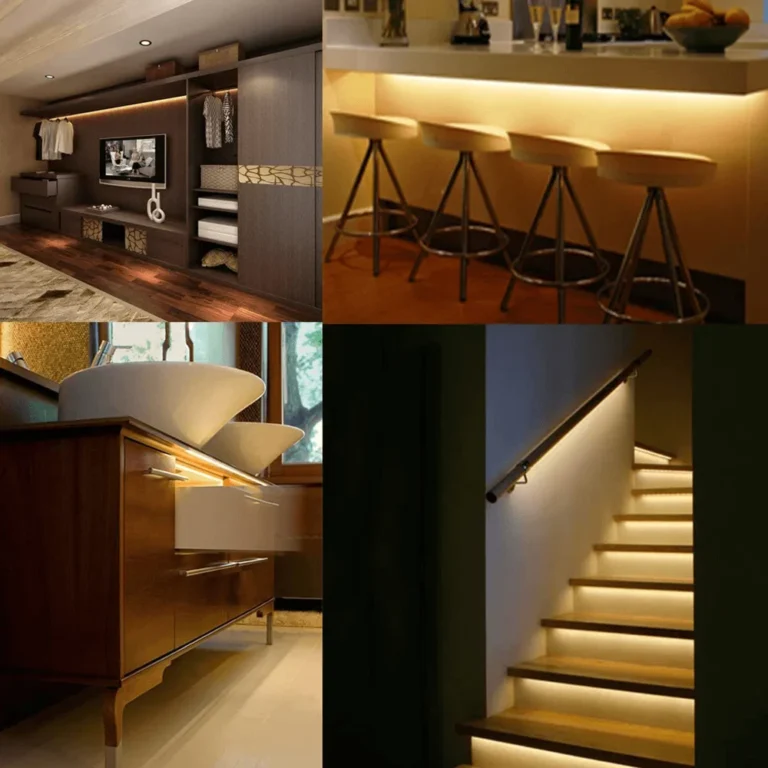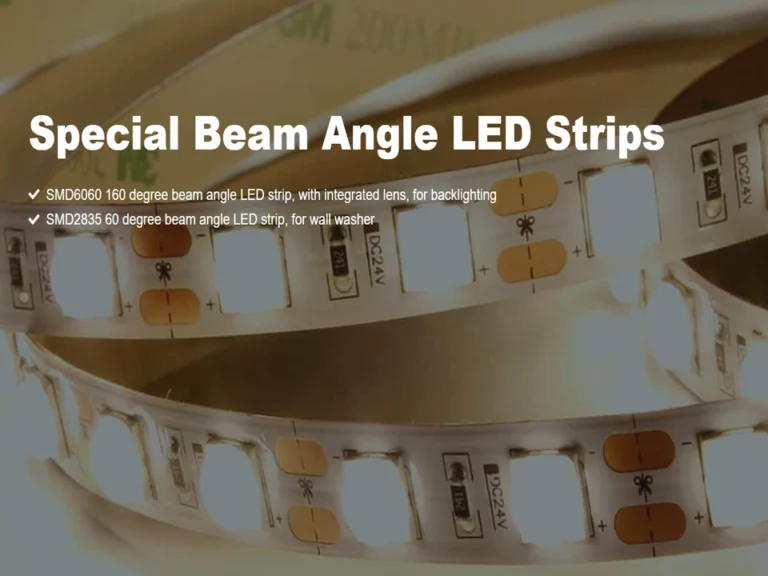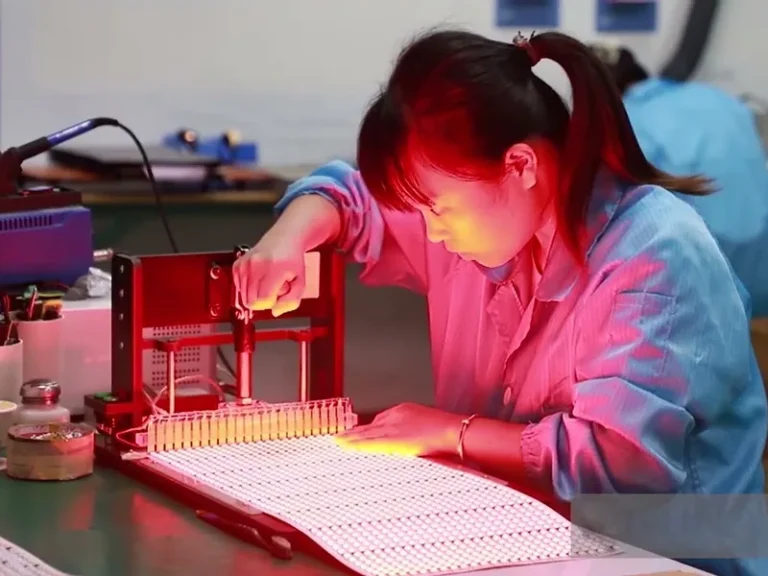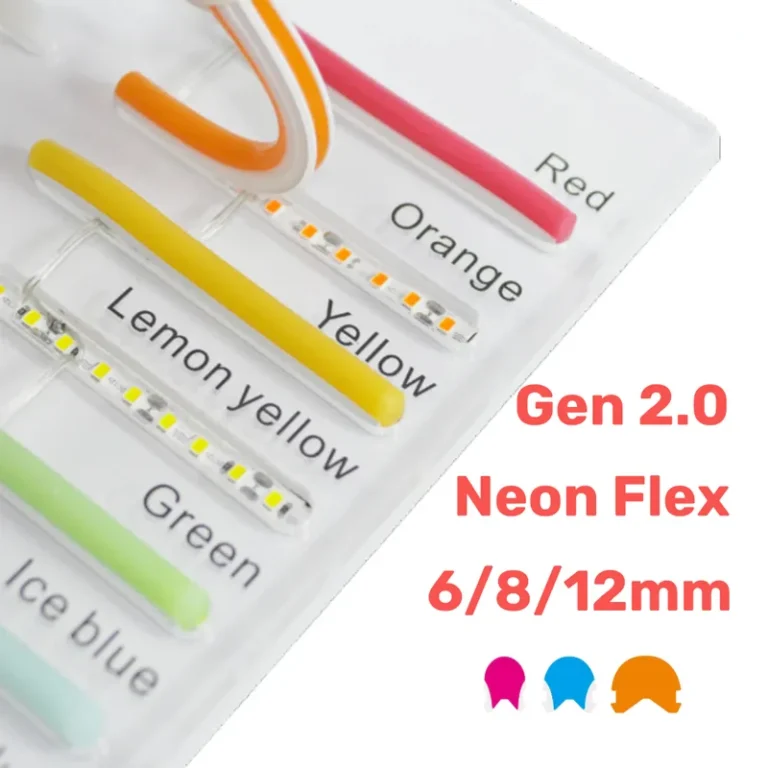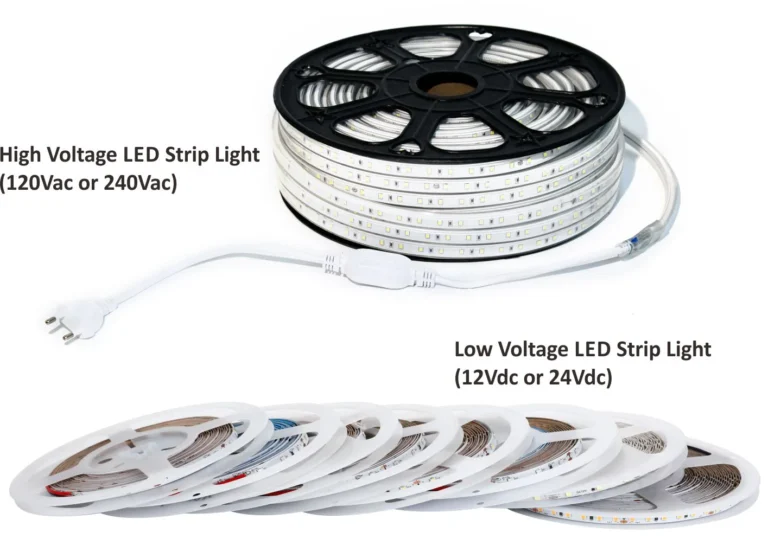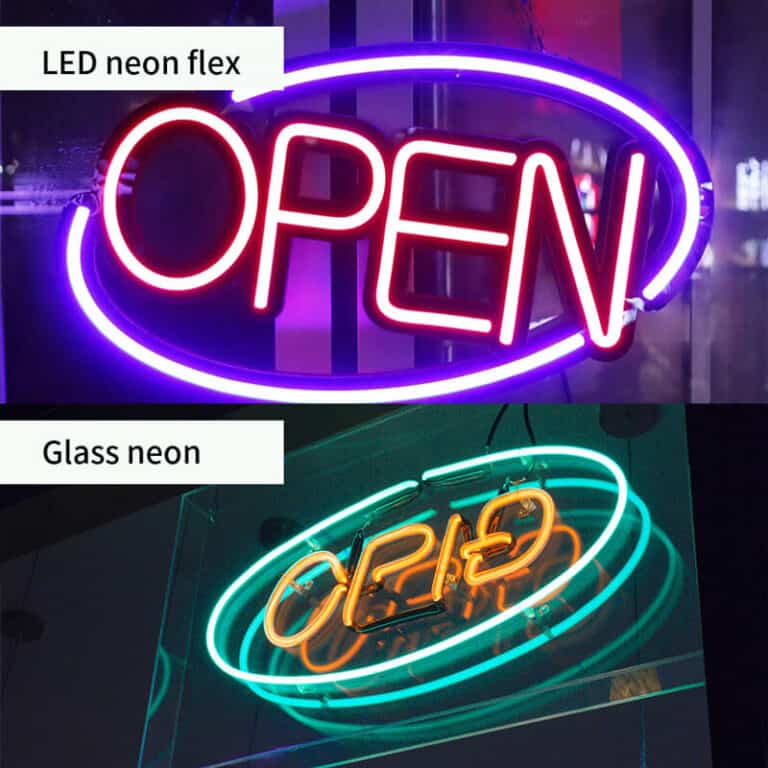LED-Neonlichter werden aufgrund ihrer Flexibilität und lebendigen visuellen Wirkung weit verbreitet in Architekturbeleuchtung, kommerziellen Dekorationen und Beschilderungsprojekten eingesetzt. Wenn sich die tatsächlichen Abmessungen des Neons jedoch erheblich von den Nennspezifikationen unterscheiden, kann dies zu ernsthaften Installationsproblemen führen. Dieses Problem wird in Projekten, in denen Clients Installationsslots streng basierend auf den angegebenen Dimensionen vorbereiten, noch kritischer. Ein Fehlanpassung von wenigen Millimetern kann zu schlechten Anpassungen, sichtbaren Lücken oder sogar struktureller Inkompatibilität führen. Aus diesem Grund spielt die Extrusionstoleranz - die dem Extrusionsprozess inhärente Dimensionsvariation - eine entscheidende Rolle bei der Gewährleistung der Produktkonsistenz und der nahtlosen Installation in professionellen LED-Neon-Anwendungen.
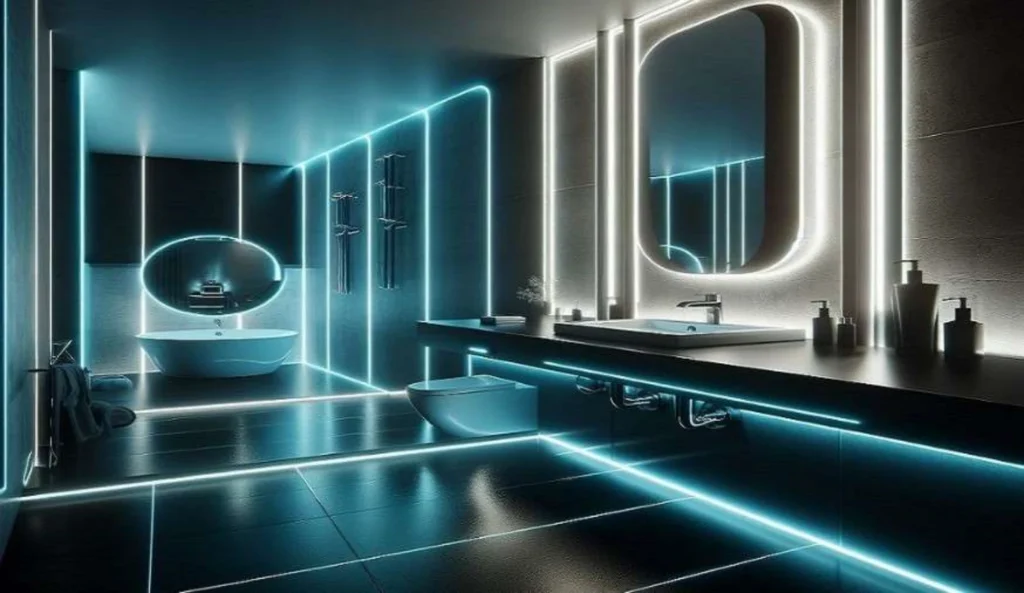
Warum haben LED-Neonlichter Maßtoleranzen?
Materialeigenschaften
Der grundlegendste Faktor, der die Maßtoleranz beeinflusst LED-Neonlichter ist der Rohstoff. Flexible Neonprofile bestehen typischerweise aus Silikon oder PVC, die beide einer thermischen Ausdehnung und Kontraktion ausgesetzt sind. Schon leichte Temperaturänderungen während der Produktion oder später in der Anwendung können zu Abweichungen in der Breite, Höhe oder Krümmung der Extrusion führen. Unterschiede in der Materialhärte oder Formulierung zwischen den Chargen können ebenfalls zu inkonsistenten Abmessungen führen, wodurch die Materialstabilität zu einem kritischen Element bei der Toleranzkontrolle wird.
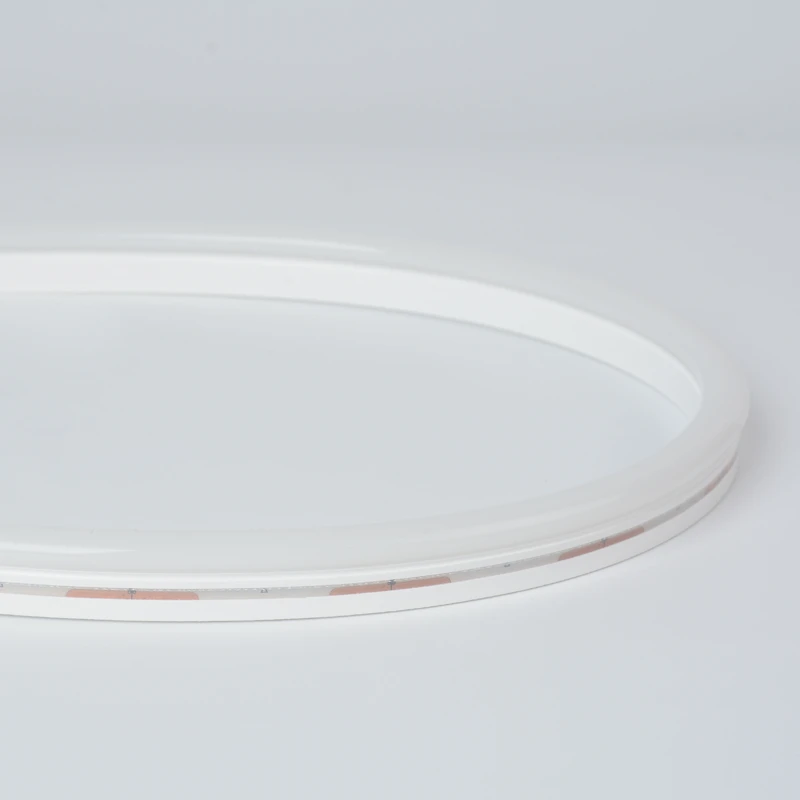
silikon neonlicht
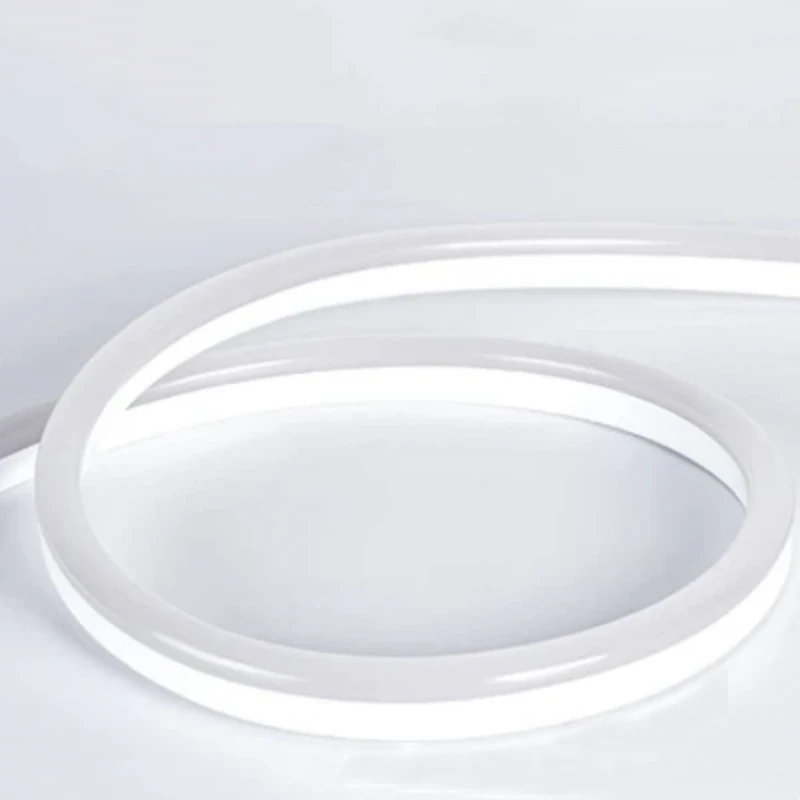
PVC-Neonlicht
Extrusionsprozesssteuerung
Der Extrusionsprozess selbst ist eine weitere wichtige Quelle für dimensionale Variationen. Die Präzision hängt stark von der Genauigkeit der Extrusionsform sowie von der Konsistenz von Temperatur, Druck und Extrusionsgeschwindigkeit ab. Wenn beispielsweise die Kühlbedingungen instabil sind - wie z. B. inkonsistente Wasserkühlung oder Luftstrom - kann das Profil schrumpfen oder ungleichmäßig verformen. Diese kleinen Abweichungen können sich ansammeln, was zu einem Endprodukt führt, das außerhalb des angegebenen Toleranzbereichs liegt.
Produktionschargenvariabilität
Auch bei gleicher Form und Material kann die Maßtoleranz zwischen den Produktionschargen variieren. Faktoren wie Maschinenkalibrierung, Bedienereinstellungen und Umgebungsbedingungen wie Feuchtigkeit können das Ergebnis subtil beeinflussen. Über große Produktionsmengen können diese Variationen die Kompatibilität von LED-Neon mit Montagekanälen und Zubehör direkt beeinträchtigen.
Preis- und Kostendruck
Ein weiterer häufig übersehener Faktor ist die Preisgestaltung. In hart umkämpften Märkten können einige kostengünstige Anbieter die Materialqualität beeinträchtigen oder die Produktionsschritte reduzieren, um die Kosten zu senken. Die Verwendung billigerer Silikone, recycelter PVC oder weniger präzise Extrusionsgeräte erhöht zwangsläufig die Dimensionsvariation. Während der Vorlaufpreis attraktiv sein kann, macht das langfristige Risiko einer schlechten Anpassung, einer verkürzten Lebensdauer und höheren Wartungskosten solche Kompromisse für professionelle Projekte kostspielig.
Gemeinsame Toleranzbereiche für LED-Neon-Extrusion
Toleranzstandards für Industrie
In der LED-Neonindustrie wird die Extrusionstoleranz normalerweise innerhalb eines kleinen Spielraums definiert, um eine zuverlässige Passform und ein einheitliches Erscheinungsbild zu gewährleisten. Die meisten Hersteller verwenden je nach Größe und Form des Profils eine Maßtoleranz zwischen ±0,3 mm und ±1,0 mm. Es gibt zwar keinen einheitlichen globalen Standard, diese Bereiche werden jedoch allgemein für professionelle Projekte in Architektur- und Beschilderungsanwendungen akzeptiert.
Unterschiede zwischen Lichtemissionstypen
Toleranzanforderungen können auch bei unterschiedlichen Emissionsstrukturen variieren. Frontemittierende Neon hat häufig eine strengere Kontrolle, da die sichtbare Oberfläche direkt die Gleichmäßigkeit der Beleuchtung beeinträchtigt, während die seitlich emittierenden Neon- und Top-Biege-Typen aufgrund der strukturellen Flexibilität eine etwas größere Toleranz ermöglichen. Größere Abdeckungsprofile, wie 270° oder 360° Neon, erfordern eine genauere Überwachung während der Extrusion, da Maßverschiebungen sowohl die Lichtverteilung als auch die Installationsstabilität beeinträchtigen.
Typische Toleranzbereiche nach Neongröße und -typ
| LED-Neon-Typ | Gemeinsame Größe (B × H oder Dia.) | Typische Extrusionstoleranz |
| Mini-Neon (schlank) | 4 × 8 mm | ±0,3 mm |
| Mini-Side-emittierende Neon | 6 × 12 mm | ±0,4 mm |
| Standardfront emittierend | 8 × 16 mm | ±0,5 mm |
| Standard-Seitenemittierung | 10×20 mm | ±0,5 mm |
| Neonbiegebiege | 12×20 mm | ±0,5 mm |
| Breites Front-Emitting-Neon | 12×25 mm | ±0,6 mm |
| 270° runde Neon | Ø16 mm | ±0,6 mm |
| Großes 270° Neon | Ø20 mm | ±0,8 mm |
| 360° flexibles Neon (klein) | Ø15 mm | ±0,5 mm |
| 360° flexibles Neon (groß) | Ø25 mm | ±1,0 mm |
Wie sich Maßtoleranz auf Neon-Anwendungen auswirkt
1. Installationsherausforderungen
Wenn die Extrusionstoleranz von LED-Neonleuchten nicht gut gesteuert wird, wird die Installation problematisch. Auch geringe Maßschwankungen können dazu führen, dass das Profil in Aluminiumkanälen oder Montageschlitzen zu fest oder zu locker ist. Dies führt häufig zu sichtbaren Lücken, ungleichmäßiger Ausrichtung oder erhöhter Arbeitskraft während der Montage vor Ort. Für architektonische Großprojekte sind konsistente Abmessungen unerlässlich, um eine nahtlose Installation zu erreichen und Nacharbeiten zu reduzieren.
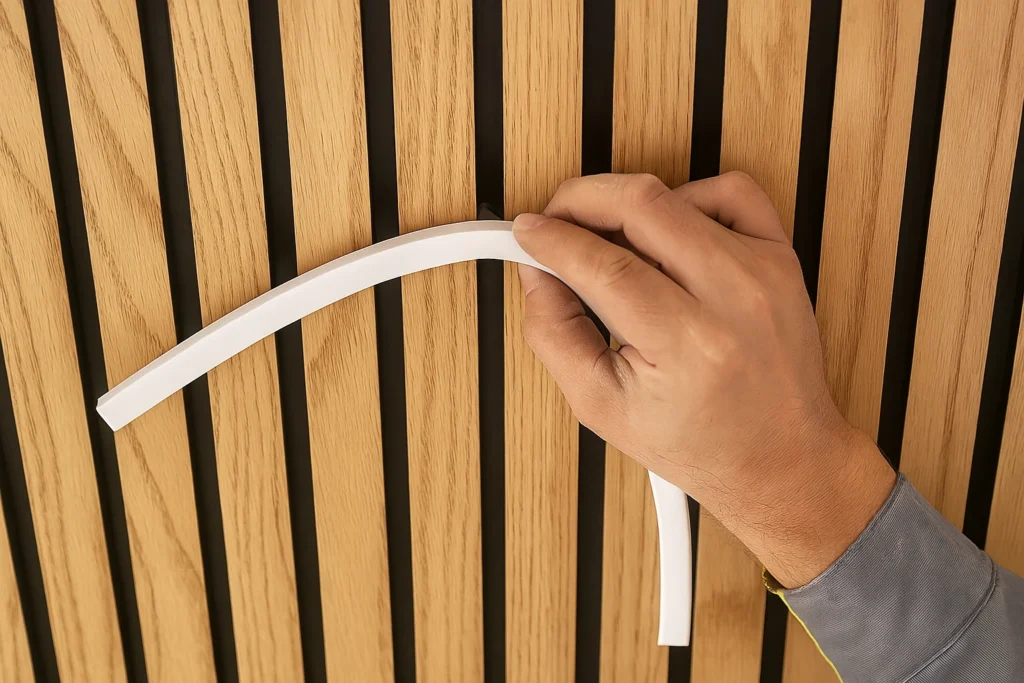
2. Auswirkungen auf die Lichteinheitlichkeit
Die Extrusionstoleranz beeinflusst auch die Gleichmäßigkeit der Lichtleistung. Unterschiede in der Dicke der Silikon- oder PVC-Einkapselung können zu einer inkonsistenten Diffusion führen, die zu helleren oder dunkleren Bereichen führt. Bei Frontemitting Neon macht sich diese ungleichmäßige Lichtverteilung besonders bemerkbar und verringert die optische Gesamtqualität der Anlage.
3. Wasserdichte Bewertung und Zuverlässigkeit
Toleranzprobleme beeinflussen die Abdichtung und die langfristige Zuverlässigkeit von LED-Neonprodukten weiter. Wenn die Profilabmessungen vom angegebenen Bereich abweichen, sind die Abdichtungen um Endkappen, Verbinder oder Verbindungen möglicherweise nicht vollständig wirksam. Dies beeinträchtigt die IP-Bewertung und erhöht das Risiko des Eindringens von Wasser, was die Lebensdauer des Produkts verkürzen und Ausfälle in Außenanwendungen verursachen kann.
So steuern und lösen Sie Toleranzprobleme in LED-Neonlichter
1. Optimierung des Fertigungsprozesses
Der erste Schritt zur Reduzierung der Extrusionstoleranz ist die präzise Steuerung des Herstellungsprozesses. Hochpräzise Formen, stabile Extrusionsgeschwindigkeit und eine angemessene Temperaturregelung spielen eine entscheidende Rolle bei der Aufrechterhaltung gleichbleibender Abmessungen. Regelmäßige Wartung und Kalibrierung der Extrusionsausrüstung sichern die Genauigkeit weiter.
2 . Qualitätskontrollmaßnahmen
Ebenso wichtig ist eine strenge Qualitätskontrolle. Hersteller sollten die Inline-Überwachung während der Extrusion durchführen und Endmaßprüfungen an fertigen LED-Neonlichtern durchführen. Die Aufzeichnung von Toleranzdaten hilft dabei, Trends zu erkennen und zu verhindern, dass defekte Chargen Kunden erreichen.
3. Überlegungen zum Projektdesign und -installation
Aus Projektsicht können Designer und Installateure Risiken minimieren, indem sie Toleranzgrenzen bei Schlitzgrößen, Aluminiumkanälen und Zubehör zulassen. Die Planung unter Berücksichtigung von Extrusionsvarianten sorgt für eine reibungslosere Installation vor Ort und reduziert unerwartete Anpassungen.
4. Auswahl eines zuverlässigen Lieferanten
Schließlich ist die Auswahl eines Lieferanten mit ausgewiesener Expertise in der Toleranz der LED-Neonextrusion von entscheidender Bedeutung. Professionelle Hersteller mit fortschrittlicher Ausrüstung, Zertifizierung und einem starken Qualitätssystem bieten stabilere Produkte, die den Projektinhabern das Vertrauen in die langfristige Leistung geben.

Fazit: Sicherstellung der Konsistenz in professionell geführten Neon-Projekten
Maßtoleranz ist ein unvermeidlicher Faktor bei der Herstellung von LED-Neonlicht, aber mit den richtigen Materialien, der strengen Extrusionskontrolle und dem professionellen Qualitätsmanagement kann sie effektiv minimiert werden. Für Architekten, Designer und Auftragnehmer ist die Zusammenarbeit mit einem zuverlässigen Lieferanten der Schlüssel für eine reibungslose Installation und langfristige Leistung.
Unter SignliteLEDWir verwenden hochwertiges Silikon in all unseren Neon-Extrusion und sorgen für stabile Abmessungen, die den Toleranzstandards der Industrie voll entsprechen. Wenn Ihr Projekt einzigartige Größen oder engere Toleranzen erfordert, kann unser Team maßgeschneiderte Lösungen anbieten, die Ihren genauen Spezifikationen entsprechen. Kontaktieren Sie uns noch heute, um Ihre Anforderungen zu besprechen und hochwertige LED-Neonleuchten für professionelle Anwendungen zu sichern.
